Where to find Narcan in Wisconsin — and how to reverse an opioid overdose
Here's a guide for responding to an opioid overdose in Milwaukee and across the state.
Wisconsin Watch
July 12, 2023
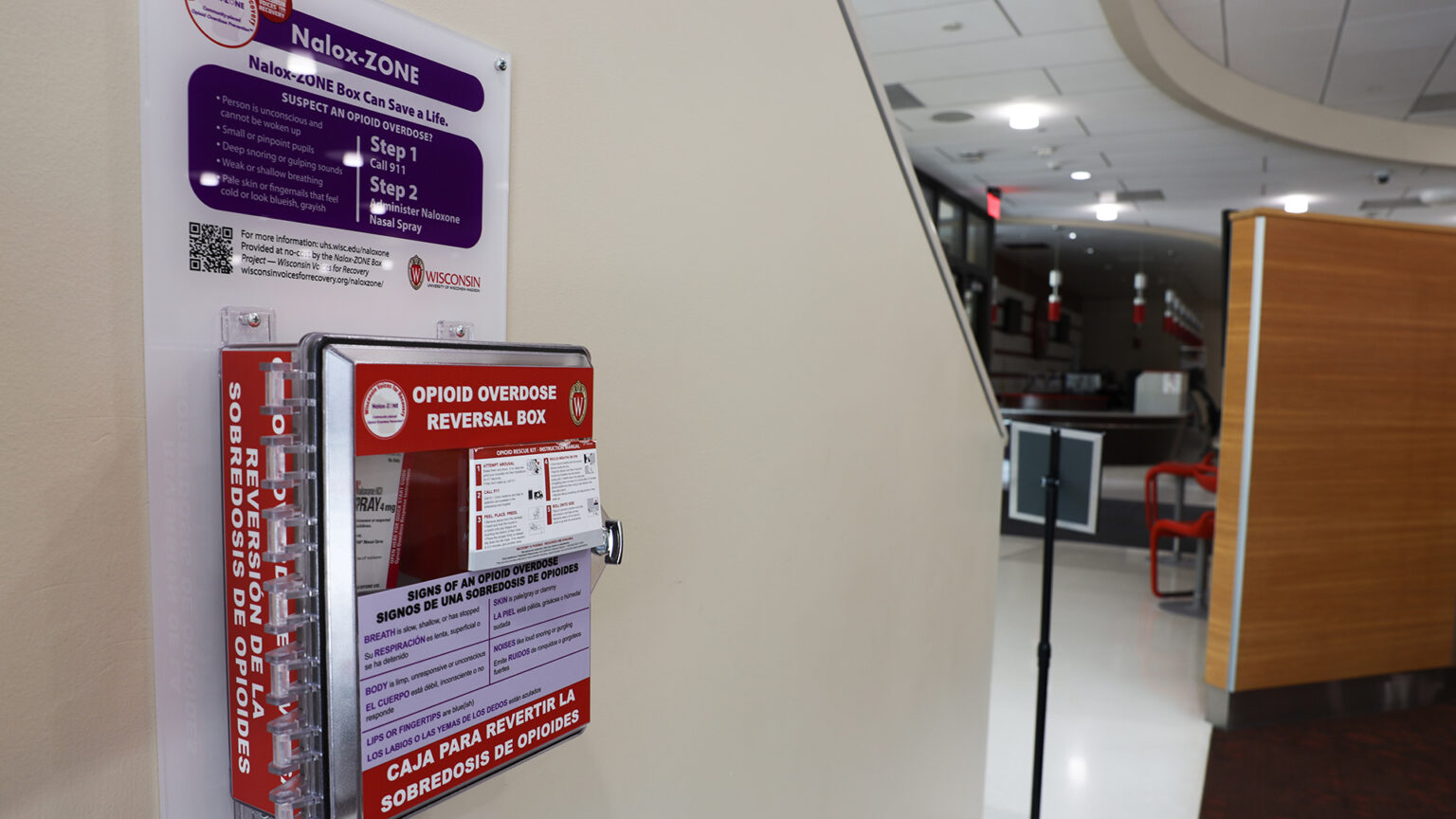
A box containing free naloxone, also commonly known by the brand name Narcan, hangs in Gordon Dining and Event Center on the University of Wisconsin-Madison campus. The box was provided through the Nalox-ZONE Program which aims to increase naloxone availability throughout Wisconsin to reduce opioid overdose deaths. (Credit: Drake White-Bergey / Wisconsin Watch)

Public health experts, advocates, nonprofits and politicians don’t always agree with each other.
But in the case of tackling opioids, they offer this consensus: People should learn how to use Narcan.
Narcan, a brand-name version of naloxone, blocks opioids from binding to receptors in the brain, quickly reversing the effects of an overdose.
Opioid overdoses a growing concern
“Everyone has the potential to find someone that is experiencing an overdose,” said Amy Molinski, peer support specialist at Community Medical Services and one of the peers for the Milwaukee Overdose Response Initiative. The program is a collaboration between the Milwaukee Fire Department, the city of Milwaukee Health Department and other groups.
In 2022, Milwaukee County confirmed 621 overdose deaths, according to a county overdose dashboard.
In early April 2023, the county linked 17 deaths in just a few days to suspected overdoses. This has prompted warnings about the dangers of fentanyl and other drugs.
Overdose risks extend both to those who take illicit drugs and those who have prescription opioids, said Milwaukee Fire Capt. David Polachowski, who supervises the Milwaukee Overdose Response Initiative.
“If you don’t have Narcan available,” Polachowski said, “there’s just potential for a fatal overdose.”
In short, Narcan saves lives. Here’s how to use it.
How to detect the signs of an opioid overdose
The first step of using Narcan is to know the common signs of an opioid overdose.
They include having pale skin and lips; experiencing slow breathing and “snoring” breaths; vomiting; and having a limp body. In addition, victims can have extremely constricted pupils, or “pinpoint” pupils.
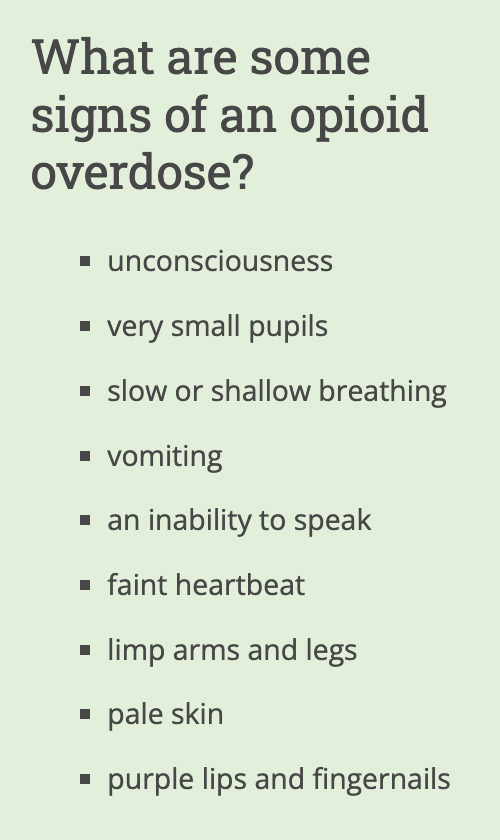
The National Institute on Drug Abuse lists these signs that a person may be suffering an overdose of fentanyl or another opioid. (Credit: Courtesy of the National Institute on Drug Abuse)
How to check for responsiveness
The next step is to check for responsiveness.
If someone is experiencing an overdose, they are not able to communicate, said Courtney Geiger, public health strategist with Milwaukee Health Department.
Polachowski said to take the knuckles of your hand and rub it in the center of the person’s chest as hard as you can, while you’re calling their name or just calling out to them.
If the person is unresponsive, check for breathing.
How to check for breathing
See if the person’s chest is rising, or place your hand or head on the person’s chest.
If the person is breathing but is unresponsive, call 911. A person does not need Narcan if they are breathing, since Narcan’s purpose is to restore breathing.
But, Polachowski said, “You need to call 911 in case it’s not an overdose. You want to have EMS on its way, so that they can treat the person for whatever reason that they’re unresponsive … if it’s a diabetic reason or stroke or a heart attack.”
If the person is not breathing, administer Narcan and still call 911.
“You just put your phone on speakerphone, call 911 and then you start the administration of Narcan,” Polachowski said.
How to administer Narcan
Narcan comes in a nasal spray bottle with enough for two sprays.
Insert the nozzle into a person’s nostril and spray it once. If you can, tilt the person’s body, or at least their head, to the side to prevent choking or aspiration in case of vomiting.
After the initial spray, wait two to three minutes to see if it works, “which is going to seem like forever,” Polachowski said.
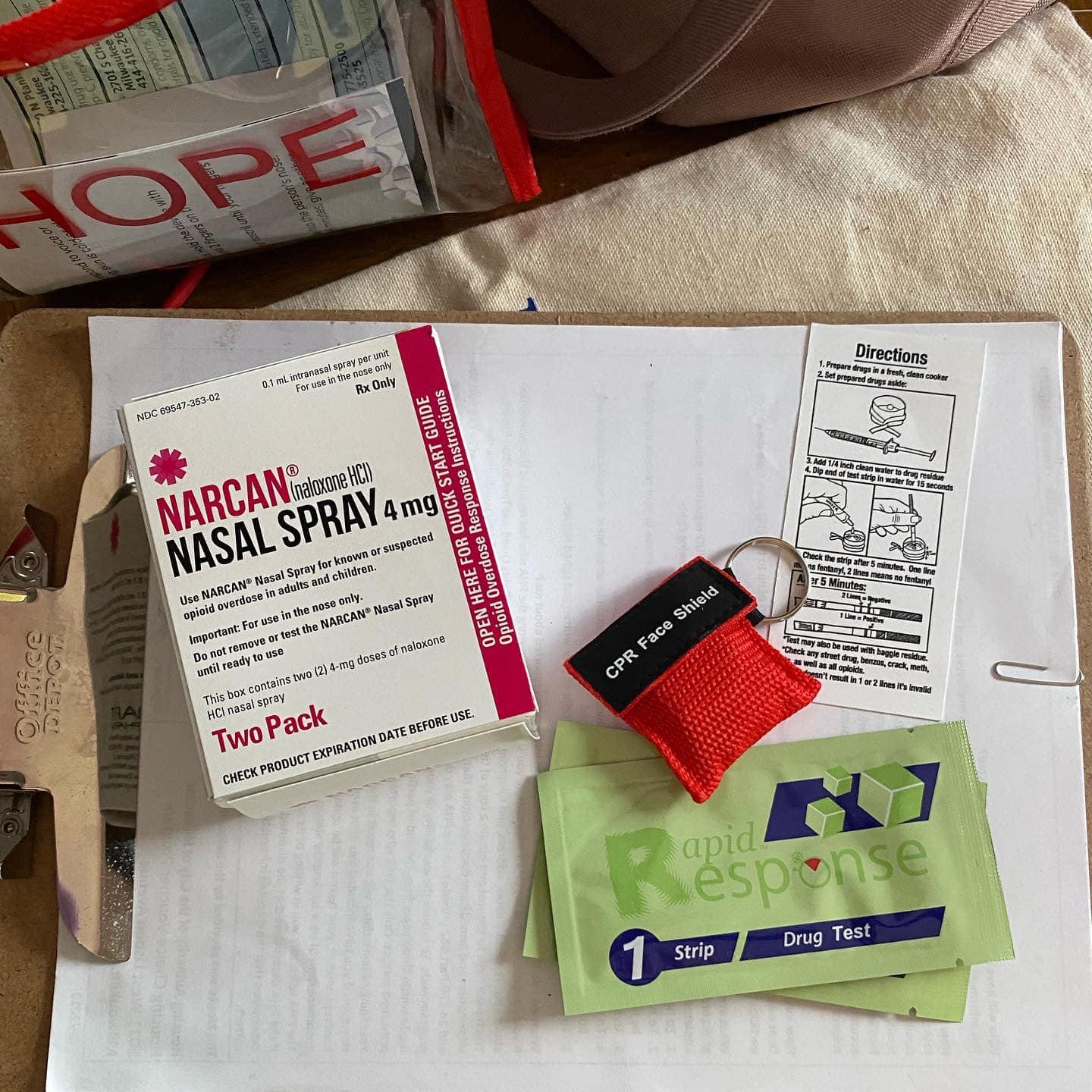
The contents of a Milwaukee Overdose Response Initiative “Hope Kit” are shown, including Narcan nasal spray to temporarily reverse the effect of opioids, CPR face shields and fentanyl testing strips. (Credit: Courtesy of MKE Overdose Prevention)
How to prepare for emergency workers to arrive
The goal is to get the person breathing again while waiting for EMS to arrive, Geiger said.
If the first spray does not get the person breathing, then administer the second spray into the other nostril. If the person does not begin breathing after the second spray, begin rescue breathing.
For rescue breathing, make sure the person is on their back, clear their airway by tilting the head back and chin up, pinch their nose, create a seal with your mouth around the person’s mouth and gently breathe into their mouth for one second.
Keep breathing into their mouth every five to six seconds, until the person can breathe on their own or EMS arrives.
Be ready to relay to EMS as much information as you have about the person’s situation and what steps you have taken.
Where to find Narcan in Wisconsin
Narcan is widely available in Wisconsin and can be purchased without a prescription at hundreds of pharmacies. The Wisconsin Department of Health Services maintains a map showing those locations.
Wisconsin residents can receive free Narcan by mail. Submit a request here.
Where to find Narcan specifically in Milwaukee
The Milwaukee Health Department distributes and provides training free for Narcan at the Frank P. Zeidler Municipal Building, located at 841 N. Broadway; the Joseph J. Zilber School of Public Health at the University of Wisconsin-Milwaukee, located at 1240 N. 10th St.; and at community events. People can get training, and related resources, by emailing [email protected] or calling 414-309-5295.
Narcan and training also is available at no cost at the Community Prevention Center, a clinic of the Sixteenth Street Community Health Centers. The address is 1243 S. Cesar E. Chavez Drive, and the phone number is 414-897-5645.
Narcan also can be found at no cost in “HOPE Kits,” which are distributed by the Milwaukee Overdose Response Initiative and available at many firehouses throughout the city. The kits also include fentanyl test strips, among other resources.
Jim Malewitz of Wisconsin Watch contributed reporting. A version of this story was first published by Milwaukee Neighborhood News Service, a nonprofit news organization that covers Milwaukee’s diverse neighborhoods.
 Passport
Passport




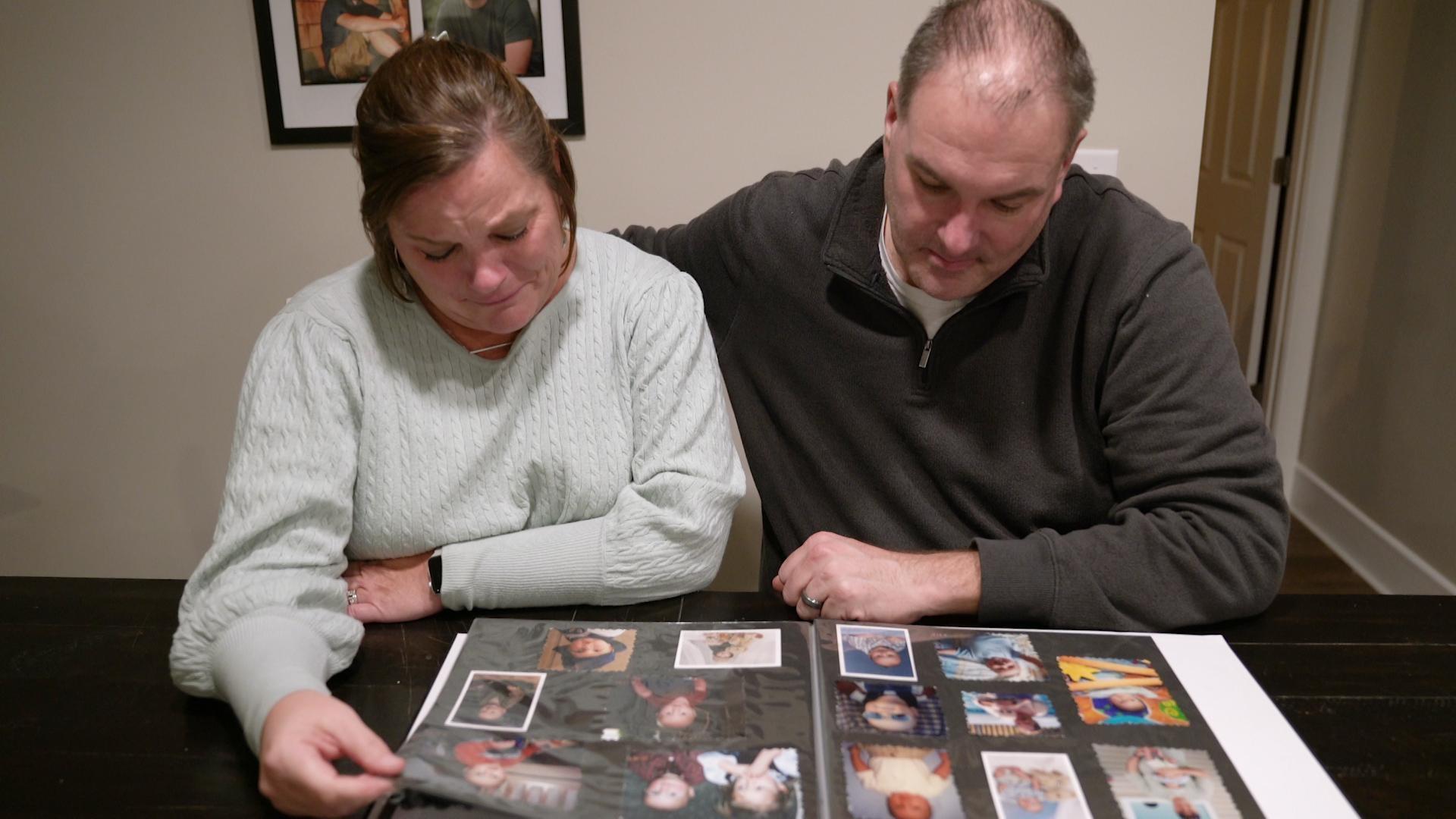
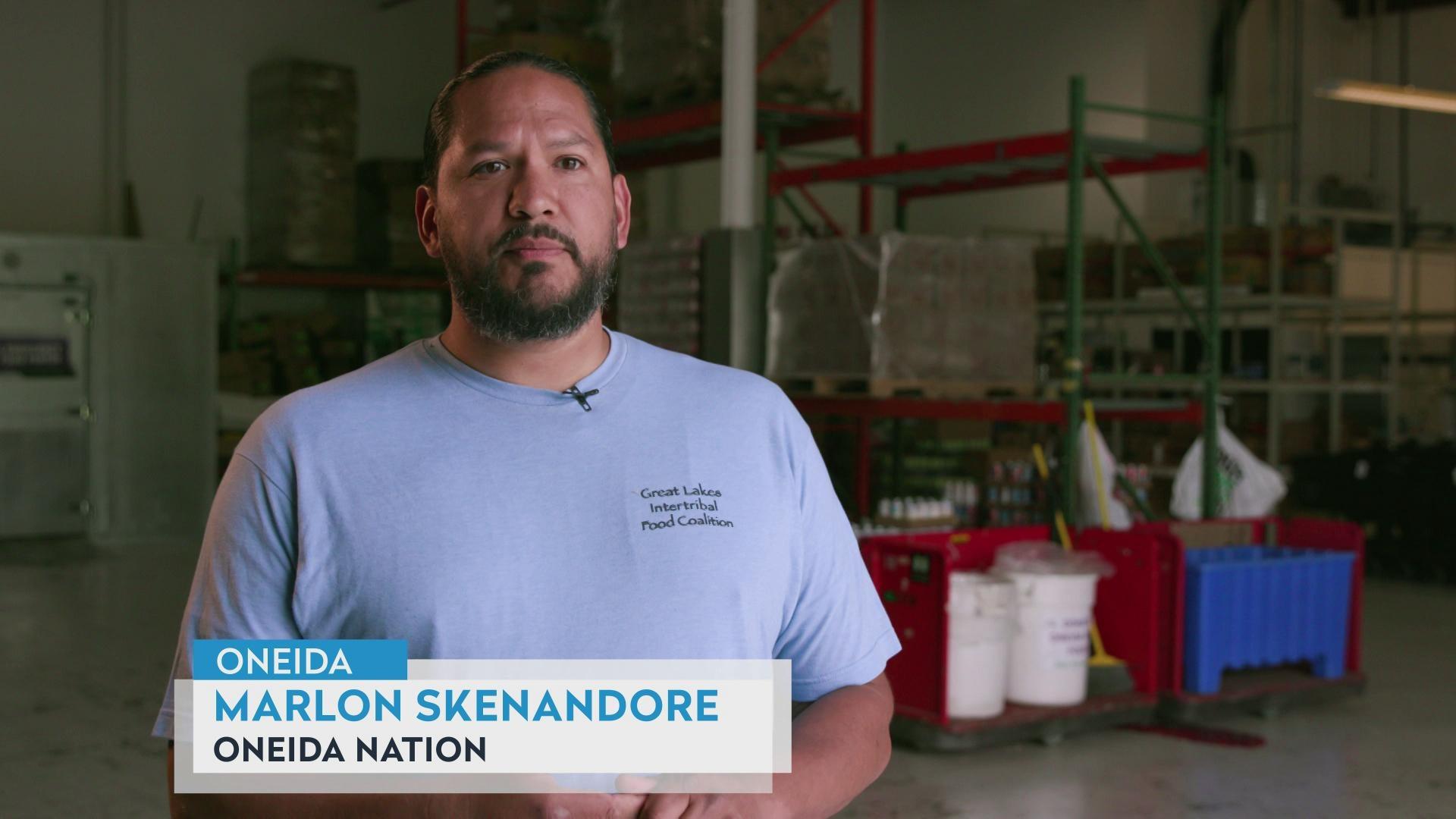
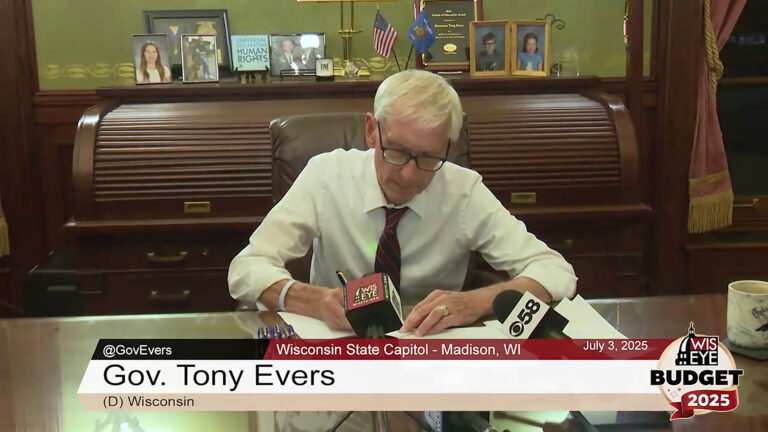
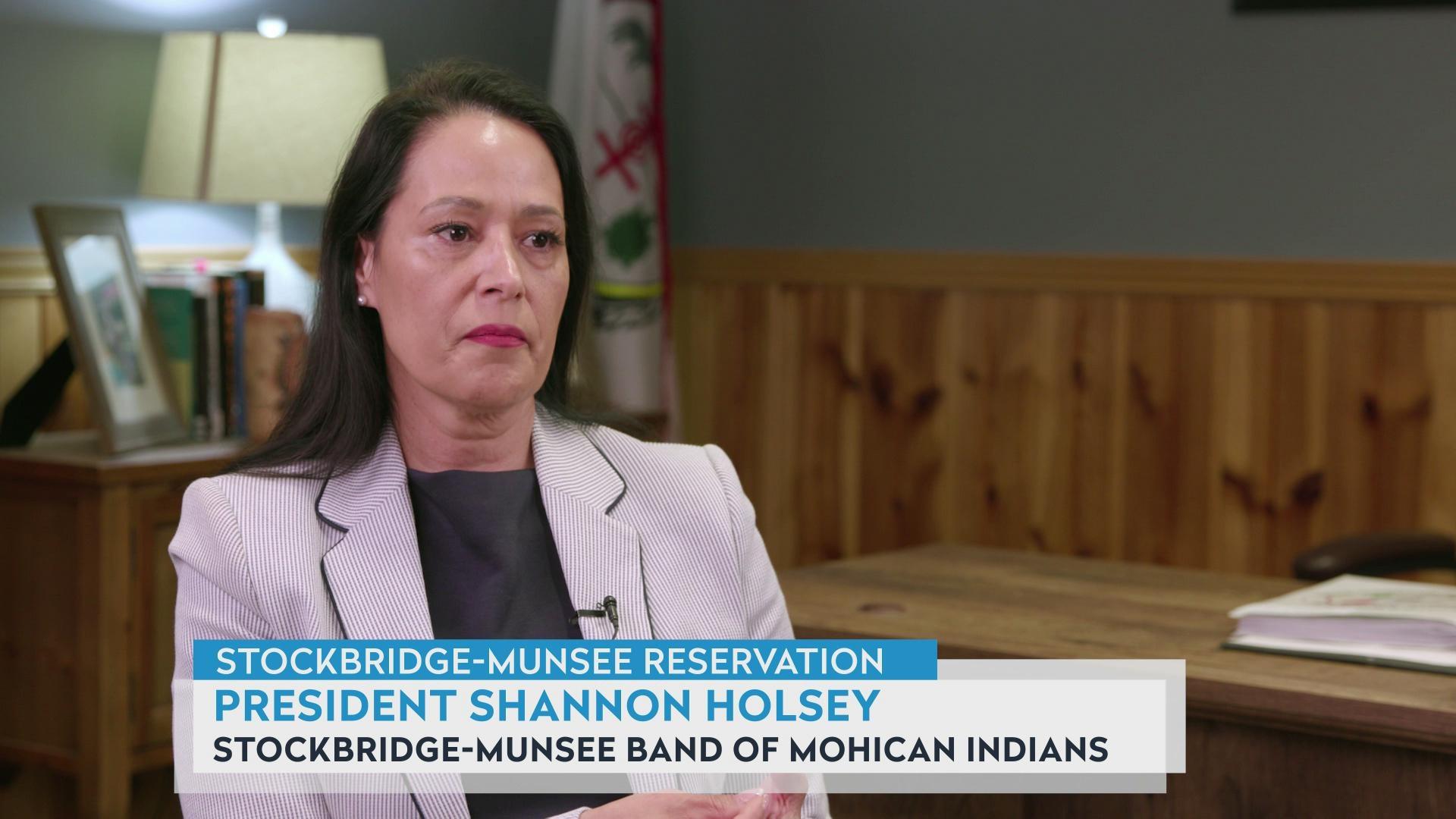
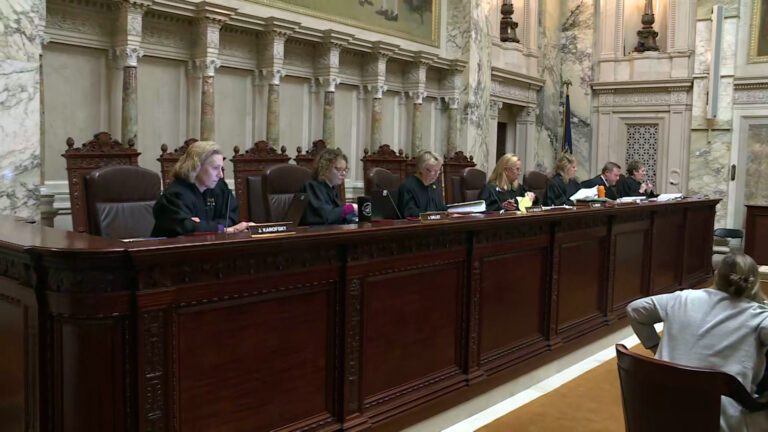


Follow Us